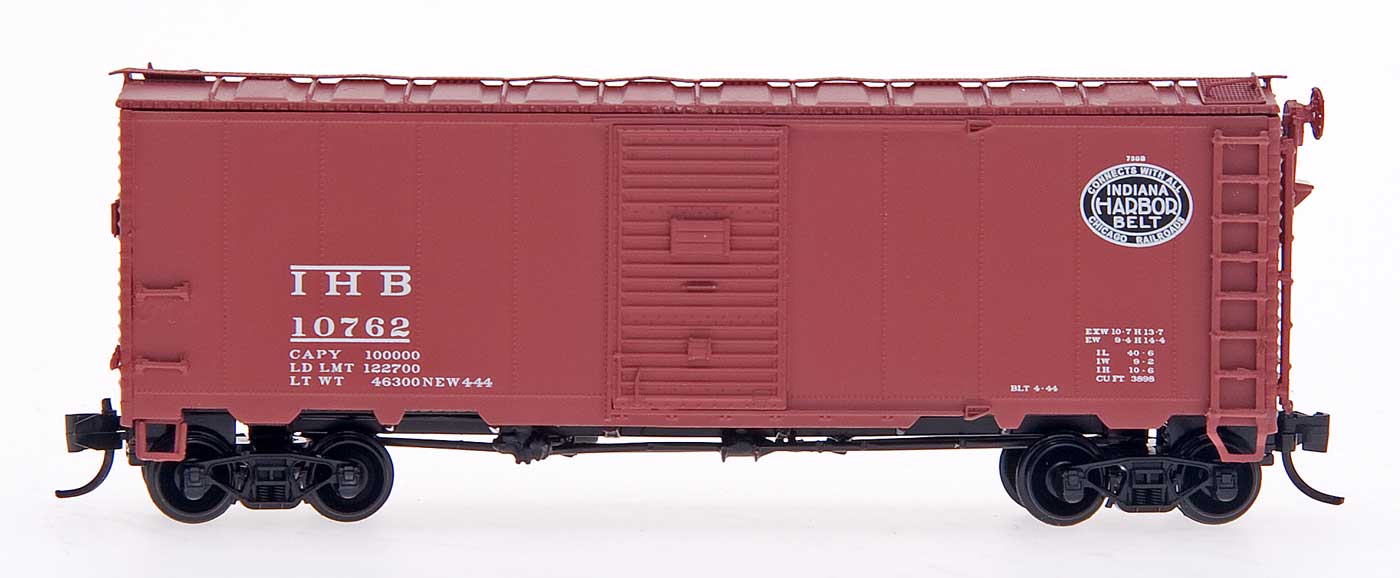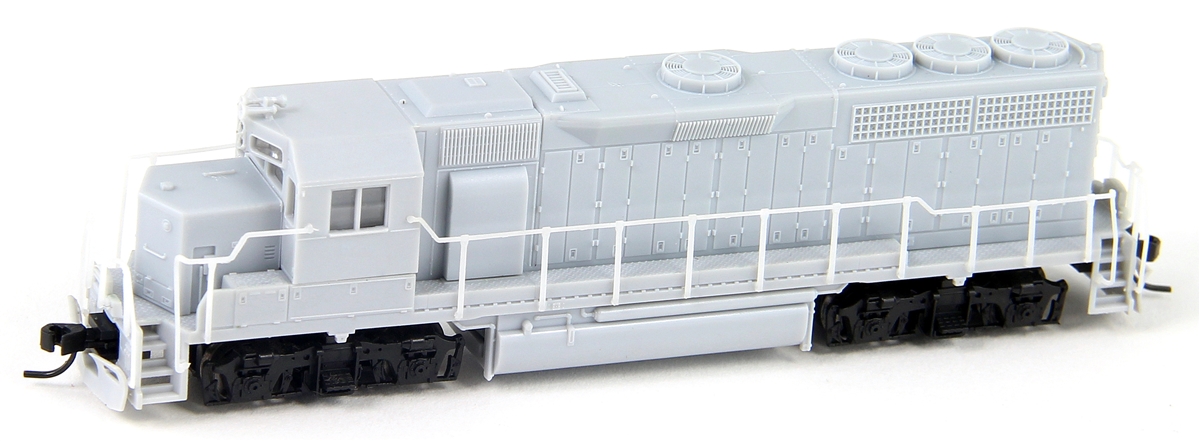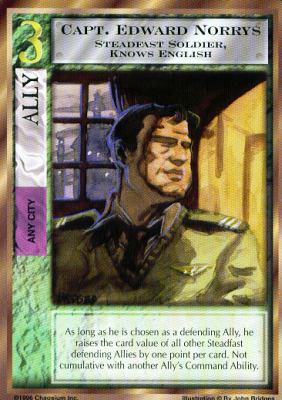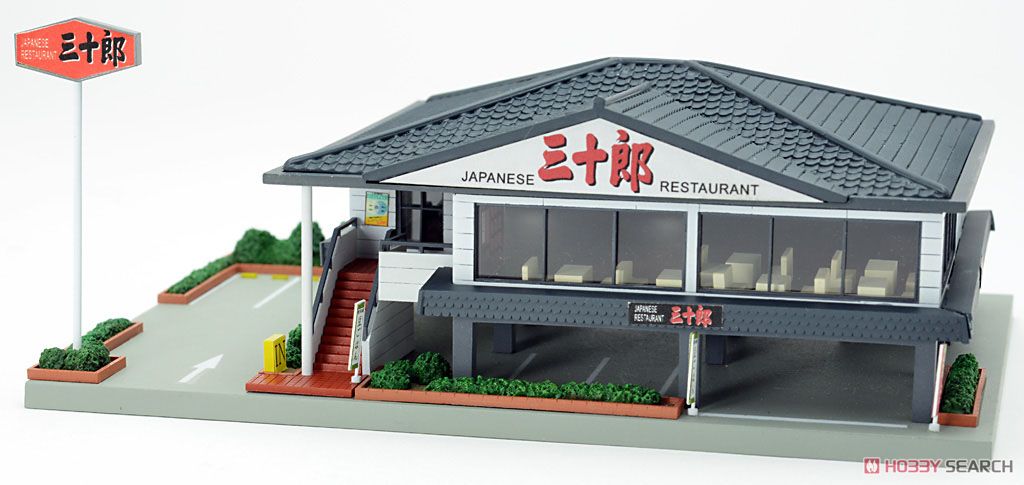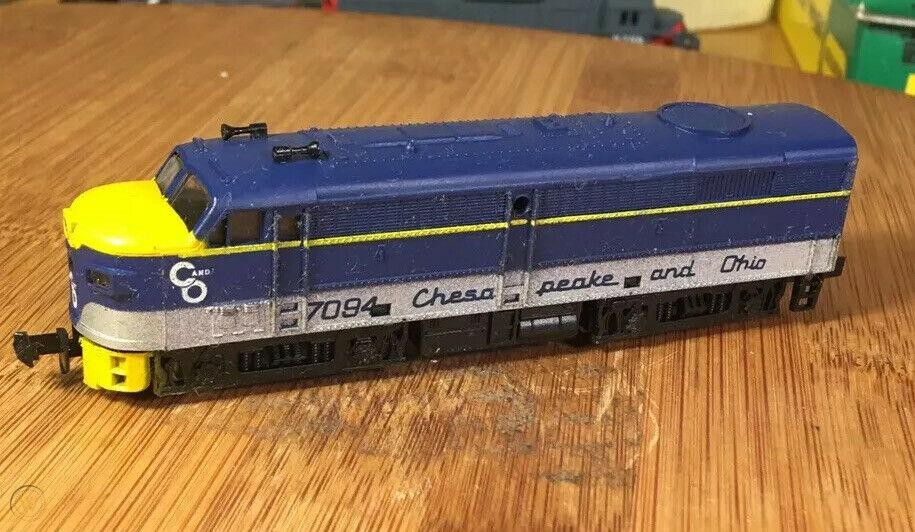Specific Item Information: The prototype was built in April of 1944.
Prototype History: The Association of American Railroads had been establishing design standards for freight cars since the early part of the century. Each new design standard meant higher capacity, lighter, more durable cars. The 1937 standard 40' box car featured an interior height of 10'. Just prior to America's entry into the war, there was a push for an even larger interior height for the AAR standard. The first cars that would eventually be termed 1944 AAR, were actually built in 1941 but the war delayed its declaration as the standard. The new taller cars required a new design of end. Corrugated metal ends had been used since the days when wood side cars dominated for a very good reason, shifting loads would burst through wooden ends during sudden starts and stops! These corrugated panels were stamped in two sections, split horizontally down the middle. The 1937 standard had 5 ribs on one half and 4 ribs on the other -- creating what is called a 5-4 Dreadnaught end. The slightly taller 1944 model required something a little different. The lower panel has 4 ribs while the upper panel has 3 then a space and a final rectangular rib at the top. Called a 4-3-1 (or R-3-4) Improved Dreadnaught end, this design would dominate new box car construction for years.
Road Name History: The IHB is an independent railroad which is jointly owned by Conrail Shared Assets Operations (51%) and Canadian Pacific Railway (49%). These shareholders trace their ownership stake in IHB to previous mergers and acquisitions in the railroad industry. This came from Conrail, which had owned a 51% controlling interest. Conrail's ownership is traced back to the Penn Central Transportation Company and prior to that, the New York Central Railroad and Pennsylvania Railroad. Canadian Pacific's ownership is through its subsidiary, the Soo Line Railroad, which had inherited it from the Chicago, Milwaukee, St. Paul and Pacific Railroad.
The line comprises 320 miles (510 km) of track?30 miles of single mainline track, 24 miles (39 km) of double-main track and 266 miles (428 km) of additional yard and side track?starting northwest of Chicago in Franklin Park, Illinois, traveling southeast around the city to its headquarters in Hammond, Indiana.
The line's largest yard, [Blue Island] is located in Riverdale, Illinois with other yards in Burnham, Calumet City, Alsip, Argo, LaGrange, Rose and Franklin Park. In [Indiana] Whiting, Hammond, Michigan Ave, Lake Front in East Chicago. The Gibson Yard located in [Hammond], is arguably the largest auto-switching operation in the United States.
Throughout the 1970s and 1990s to the present, Indiana Harbor Belt operated an extensive interlocking tower system including: East End, Osbourne, Calumet, State Line, Gibson, Stewart Avenue, Graselli, 55th Street and Argo towers with switch tenders at North Harvey and Columbia Avenue in Hammond. They later took over State Line tower from the Chicago and Western Indiana Railroad.
From Wikipedia
The line comprises 320 miles (510 km) of track?30 miles of single mainline track, 24 miles (39 km) of double-main track and 266 miles (428 km) of additional yard and side track?starting northwest of Chicago in Franklin Park, Illinois, traveling southeast around the city to its headquarters in Hammond, Indiana.
The line's largest yard, [Blue Island] is located in Riverdale, Illinois with other yards in Burnham, Calumet City, Alsip, Argo, LaGrange, Rose and Franklin Park. In [Indiana] Whiting, Hammond, Michigan Ave, Lake Front in East Chicago. The Gibson Yard located in [Hammond], is arguably the largest auto-switching operation in the United States.
Throughout the 1970s and 1990s to the present, Indiana Harbor Belt operated an extensive interlocking tower system including: East End, Osbourne, Calumet, State Line, Gibson, Stewart Avenue, Graselli, 55th Street and Argo towers with switch tenders at North Harvey and Columbia Avenue in Hammond. They later took over State Line tower from the Chicago and Western Indiana Railroad.
From Wikipedia
Brand/Importer Information: InterMountain was founded in 1985 by Fred Brummet. They got started in the model railroad business by producing O-Scale model kits. They got started in the N Scale business almost a decade later when in 1994 they introduced the 40-23 reefer car in kit form. Later, in 1998, they started producing RTR (Ready-to-Run) models. By the early 2000s, InterMountain phased out kit production in favor of the RTR models.
The InterMountain Railway company is located at 1224 Boston Ave in Longmont, CO. They are a manufacturer of HO, N and Z scale model trains. They have produced kits as well as RTR (Ready-To-Run) models. Their N Scale products include locomotives as well as rolling stock. Their rolling stock lineup includes Boxcars, Hoppers, Tank Cars, Reefers, Gondolas, Stock Cars and Flatcars.
Their locomotive releases have primarily been diesel units, with the one major exception being their series of AC-12 Cab Forward steam locos. Their diesel lineup includes F3's, F7's, F9's, SD40's, SD45's and FT units. They are known for quality and detail. They also release their rolling stock in larger varieties of road numbers than most of the other manufacturers.
The InterMountain Railway company is located at 1224 Boston Ave in Longmont, CO. They are a manufacturer of HO, N and Z scale model trains. They have produced kits as well as RTR (Ready-To-Run) models. Their N Scale products include locomotives as well as rolling stock. Their rolling stock lineup includes Boxcars, Hoppers, Tank Cars, Reefers, Gondolas, Stock Cars and Flatcars.
Their locomotive releases have primarily been diesel units, with the one major exception being their series of AC-12 Cab Forward steam locos. Their diesel lineup includes F3's, F7's, F9's, SD40's, SD45's and FT units. They are known for quality and detail. They also release their rolling stock in larger varieties of road numbers than most of the other manufacturers.
Item created by: George on 2016-10-08 10:31:55. Last edited by gdm on 2020-05-29 14:52:37
If you see errors or missing data in this entry, please feel free to log in and edit it. Anyone with a Gmail account can log in instantly.
If you see errors or missing data in this entry, please feel free to log in and edit it. Anyone with a Gmail account can log in instantly.


